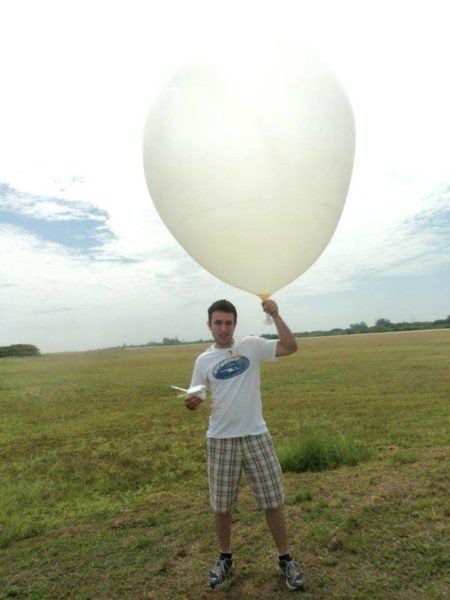El Niño is fairly well understood, and by now it’s a household word. But another huge system in the tropical Indian and Pacific oceans, which wreaks similar havoc in world weather, is relatively unknown and is just beginning to be explained.
University of Washington scientists have published a mathematical model that could help explain and forecast the Madden-Julian Oscillation, a massive cluster of thunderstorms that plays a role in global weather.
“Over the Indian Ocean and the Western Pacific – one of the warmest, most moist areas of the planet – there is a colossal cluster of clouds every 40 to 50 days or so,” said corresponding author Ángel Adames, a UW doctoral student in atmospheric sciences. “When it’s active, it’s a very strong signal.”
The MJO, as it is known, is a gargantuan cluster of rain clouds that pummels the Earth below it, bringing a moving collection of rainstorms that lasts a week or more, followed by a period of mostly clear skies, and repeats about every month and a half. Since people’s memory of weather from more than a month ago tends to be fuzzy, the pattern wasn’t discovered until weather balloons showed its existence in the 1970s.
Today, satellite observations can clearly show storms moving across the tropical Pacific every 45 days or so, before a quiet phase of about a month or more allows the system to rebuild. Several such cycles repeat, and then the system enters a quiet phase when it can be inactive for many months.
“We know what the MJO is doing now, but we have trouble knowing what it’s going to do next,” Adames said.
His new paper, to be published in the Journal of the Atmospheric Sciences, presents a series of equations that describe how the cluster of storms moves, and where the next will pop up.
“We believe MJO will be the next El Niño,” said co-author Daehyun Kim, a UW assistant professor of atmospheric sciences.
Better understanding of the MJO would help predict tropical rainstorms and flooding over India, northern Australia, and Pacific islands such as the Maldives and Indonesia. It could also improve medium-range global forecasts, since the MJO can nudge weather patterns that affect the mainland U.S. For example, the MJO can amplify the effects of El Niño, as it did in early January 2016, when both systems were active in the tropical Pacific at the same time.
While MJO storm clouds move eastward, the equations in the new study predict that, in the weeks that follow, clear sky conditions will develop to the west of where the storm system started, which in turn will cause the development of another region of storminess even further west.
“We came up with a theoretical model that can explain almost all of the fundamental features of the MJO,” Kim said.
“This is an idealized model, so it won’t help with forecasting yet,” Adames said. “But it shows that we’re beginning to understand the physics behind this system.”
The model explains three major elements of the MJO: Its huge size, its timescale of about 45 days, and why the storm clouds always move toward the east.
To do so, the model combines several recent theories about the MJO. One is the idea that unlike places such as the continental U.S. during winter, where the interaction between cold and warm air masses drive precipitation, in the tropics humidity reigns. The model asserts that the MJO creates high-humidity areas which eventually develop into large thunderstorms.
“I’m from Puerto Rico, and I can say with certainty that there are fewer contrasts in temperature in the tropics,” Adames said. “Another way to drive the weather is by changing the amount of humidity in the atmosphere. This is how the MJO changes weather conditions. ”
The model also incorporates the idea that as the moisture wave we see travels east, it disturbs the atmosphere to its west, setting up the stage for the next cluster of storm clouds.
The researchers used satellite observations from NASA’s Tropical Rainfall Measuring Missionto check their math. Indeed, the data show that each storm begins slightly to the west of the preceding one, and matches the patterns they predicted.
Still mysterious is what first sets up an MJO. It tends to be more active in winter, but sometimes disappears for months at a time. Also unknown is why some MJOs reach the Pacific, where they affect global weather, while others just peter out in the Indian Ocean. These will be areas of future study, Kim said, as well as looking at how to improve representation of the MJO in global climate models.
The research was funded by NASA.


